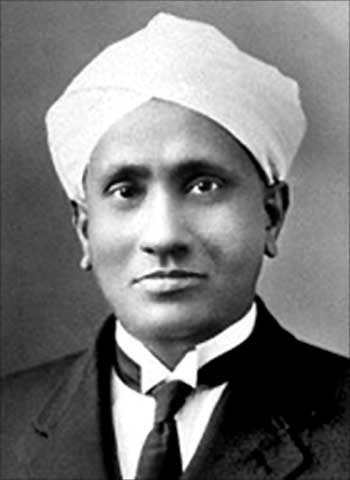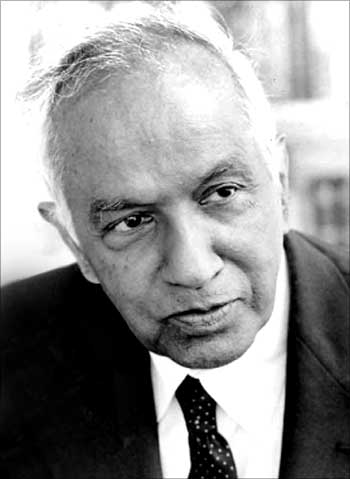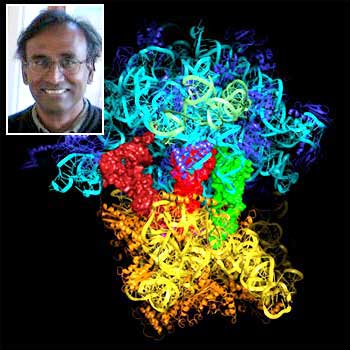Now, here we can find a doctor and a researcher with the capability of working in multiple laboratories simultaneously and becoming a team scientist, sharing the research, sharing the work and sharing the rewards too. He is the real example for “Science is borderless”.
My self Sulekha Rani.R,P.G.T Chemistry,KV INS Dronacharya , Cochin, Kerala .
Search This Blog
Saturday, May 14, 2011
Science is Borderless
Now, here we can find a doctor and a researcher with the capability of working in multiple laboratories simultaneously and becoming a team scientist, sharing the research, sharing the work and sharing the rewards too. He is the real example for “Science is borderless”.
C V Raman - his value to Science
Here was a scientist who gave up the pomp of a glittering ceremony associated with the highest honour, because he felt that his duty required him to be by the side of the student. It is this unique trait of giving value to science that builds science.
Nobel Glory To India (physics ,Chemistry and medicine)
CV Raman - Physics Nobel, 1930

Chandrasekhara Venkata Raman won the 1930 Nobel Prize in Physics for his work on the scattering of light and for the discovery of the effect named after him.
Raman made, in 1928, the unexpected and highly surprising discovery that the scattered light showed not only the radiation that derived from the primary light but also a radiation that contained other wavelengths, which were foreign to the primary light.
Raman investigated the universal character of the phenomenon by using a large number of substances as a scattering medium, and everywhere found the same effect.
The explanation of this phenomenon, which has received the name of the "Raman effect" after its discoverer, has been found by Raman himself with the help of the modern conception of the nature of light.
According to that conception, light cannot be emitted from or absorbed by material otherwise than in the form of definite amounts of energy or what are known as "light quanta".
Thus the energy of light would possess a kind of atomic character. A quantum of light is proportionate to the frequency of rays of light, so that in the case of a frequency twice as great, the quanta of the rays of light will also be twice as great.
The explanation of this phenomenon, which has received the name of the "Raman effect" after its discoverer, has been found by Raman himself with the help of the modern conception of the nature of light.
According to that conception, light cannot be emitted from or absorbed by material otherwise than in the form of definite amounts of energy or what are known as "light quanta".
Thus the energy of light would possess a kind of atomic character. A quantum of light is proportionate to the frequency of rays of light, so that in the case of a frequency twice as great, the quanta of the rays of light will also be twice as great.
Har Gobind Khorana - Medicine Nobel, 1968

Har Gobind Khorana won the 1968 Nobel Prize in Medicine for his interpretation of the genetic code and its function in protein synthesis. He shared this award with American scientists Robert W. Holley and Marshall W Nirenberg.
An American molecular biologist of Indian Punjabi origin, Dr. Khorana was responsible for producing the first man made gene in his laboratory.
His work helped bring closer the day when synthetic DNA may be introduced into the defective human tissues to bring about their repair or treat mentally retarded people and change them into more intelligent and healthy human beings.
His synthesis of RNA, capable of replication in laboratory, was a step towards the creation of life artificially. In fact, the researches opened up a new branch called Genetic Engineering in Science.
The biological language is common to all living organisms. Dr Khorana and his team had established that the mother of all codes is spelled out in three-letter words. He was also the first to synthesize oligonucleotides, that is, strings of nucleotides.
S Chandrasekhar - Physics Nobel, 1983

Subrahmanyan Chandrasekhar was awarded the 1983 Nobel Prize in Physics for his theoretical studies of the physical processes of importance to the structure and evolution of the stars.
He was the first to show how the fate of a star lies in its own birth mass. On a long sea voyage from India to England in 1930, Chandrasekhar passed the time by developing a theory that proposed that a stable white dwarf couldn't be the fate of stars above a certain critical mass.
According to his calculations, stars more than 1.4 times the mass of the Sun, which became known as the Chandrasekhar limit, must collapse under the force of their own weight, and be destined for a more spectacular fate.
If the original star was up to 2-3 times the mass of the Sun, the collapsed corpses left behind from the explosion end up as highly dense neutron stars. Stars that are more than 2-3 times the mass of the Sun suffered an even more exotic death -- the force of gravity becomes so strong that matter disappears entirely into a black hole.
Chandrasekhar adopted a highly unusual approach to his research, investigating a fresh field of study each decade, such as how stars die, how radiation passes through a star's atmosphere and the theory of black holes.
He was the first to show how the fate of a star lies in its own birth mass. On a long sea voyage from India to England in 1930, Chandrasekhar passed the time by developing a theory that proposed that a stable white dwarf couldn't be the fate of stars above a certain critical mass.
According to his calculations, stars more than 1.4 times the mass of the Sun, which became known as the Chandrasekhar limit, must collapse under the force of their own weight, and be destined for a more spectacular fate.
If the original star was up to 2-3 times the mass of the Sun, the collapsed corpses left behind from the explosion end up as highly dense neutron stars. Stars that are more than 2-3 times the mass of the Sun suffered an even more exotic death -- the force of gravity becomes so strong that matter disappears entirely into a black hole.
Dr Ramakrishnan - Chemistry Nobel, 2009

Venkatraman Ramakrishnan, Born in 1952 in Chidambaram,Tamil Nadu- a senior scientist at the MRC Laboratory of Molecular Biology at Cambridge, has been awarded the Nobel Prize in Chemistry for 2009 along with Thomas E Steitz (US) and Ada E Yonath (Israel) for their "studies of the structure and function of the ribosome". three Laureates have all generated 3D models that show how different antibiotics bind to the ribosome. These models are now used by scientists to develop new antibiotics, directly assisting the saving of lives and decreasing humanity's suffering
S Chandrasekhar - A very good teacher , he considered teaching is a life time mission.

Two of Chandrasekhar's students in 1947 were the doctoral candidates Tsung-Dao Lee and Chen Ning Yang in Particle Physics research. Even though Chandrasekhar Subramanyan maintained his office at the Yerkes Observatory in Lake Geneva, Wisconsin, he would regularly drive the one hundred miles to Chicago to guide and teach Lee and Yang and others many a times in difficult weather conditions. In 1957, these two of his students won the Nobel Prize in Physics for their work in particle physics research. This also brings out Chandrasekhar Subramanyan’s commitment to science and there by to his students. Science indeed is a life time mission for Chandrasekhar. It is this characteristic which makes youth to become passionate towards science.
“Five Minds for the Future” written by Howard Gardner.
| |||||||||||||
| |||||||||||||
| |||||||||||||
| |||||||||||||
| |||||||||||||
| |||||||||||||
Inspiring Thoughts By Dr.APJ Abdulkalam

has not yet happened
but it certainly will happen.
transform a child into a
leader- the transformatino from
‘what can you do for me’ to
‘what can i do for you’.
are booked and registered.
reside on your shoulders.
on the earth,
above the earth and
under the earth.
more important than the
education received in college
and university.
of the young.
autonomous learner.
finding the right
answers through hard
work and research into
laws of nature.
exclusively for book reading and
in a few years you will become a
knowledge centre